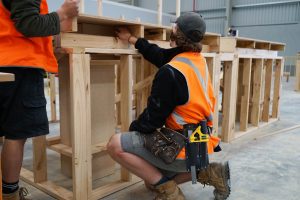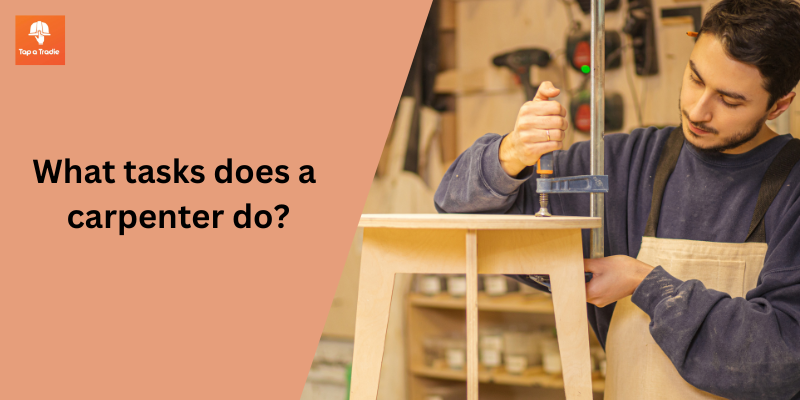Common Carpentry Tasks
When it comes to carpentry, there are numerous tasks that professionals in the field undertake on a regular basis. Carpentry involves working with wood to create structures, furniture, and other wooden objects. Whether you’re a DIY enthusiast or considering a career in carpentry, it’s essential to familiarize yourself with the common tasks involved. In this article, we’ll explore some of the key carpentry tasks that carpenters frequently undertake.
Framing
Framing is a fundamental task in carpentry, forming the skeleton or structure of a building. It involves measuring, cutting, and assembling the structural framework of walls, floors, and roofs. Carpenters use various tools, such as hammers, nails, and saws, to construct the framework. Accurate measurements and precise cuts are crucial to ensure the structural integrity and stability of the building.
Carpenters often work with lumber, including dimensional lumber, engineered wood products, and other framing materials. They follow blueprints and building codes to create sturdy and safe structures that can support the weight of walls, floors, and roofs, as well as withstand environmental forces such as wind and earthquakes.

Trim and Finish Work
Trim and finish work is the process of adding final touches to a project to enhance its appearance. Carpenters often install trim, such as baseboards, crown molding, window and door casings, and chair rails. These elements not only provide a decorative touch but also cover gaps between different materials and create a clean and finished look.
During trim installation, carpenters must accurately measure and cut the trim pieces to fit seamlessly. They use tools like miter saws, coping saws, and chisels to achieve precise cuts and joinery. Additionally, carpenters may be responsible for sanding, staining, and applying finishes to wood surfaces to protect them from wear and tear while enhancing their natural beauty.
Cabinet Making
Cabinet making is a specialized carpentry task that involves designing, building, and installing cabinets for kitchens, bathrooms, and other areas of a home or commercial space. Carpenters skilled in cabinet making work with a variety of materials, including solid wood, plywood, and particleboard, to construct functional and aesthetically pleasing cabinets.
The process of cabinet making involves taking accurate measurements, cutting the materials, assembling the cabinet components, and adding hardware such as hinges and drawer slides. Carpenters must ensure that the cabinets are level, sturdy, and properly aligned during installation. Cabinet making requires precision and attention to detail to create storage solutions that are both functional and visually appealing.
Deck Building
Deck building is a common carpentry task that involves constructing outdoor platforms or decks attached to a house or freestanding in a yard. Carpenters who specialize in deck building work with a range of materials, including pressure-treated lumber, composite decking, and tropical hardwoods. https://nazbuild.com.au/carpentry-mooloolaba/

To build a deck, carpenters must first create a design and plan the layout. They then measure and mark the location of footings, install support posts, and construct the deck frame. Decking boards are then secured to the frame using screws or hidden fasteners. Railings, stairs, and other features may also be added to enhance the functionality and safety of the deck.
Renovations
Renovations involve making significant changes or improvements to existing structures or spaces. Carpenters play a vital role in renovations by carrying out tasks such as removing walls, installing new doors and windows, and modifying existing structures to accommodate desired changes. They work closely with other professionals, such as architects and contractors, to ensure that renovations meet the client’s requirements and comply with building codes.
During renovations, carpenters may need to reframe walls, install new flooring, or add additional storage solutions. They must have a solid understanding of structural integrity and design principles to successfully execute renovations while maintaining the safety and functionality of the space.
Repairs
Repair work is an essential aspect of carpentry, as structures and furniture can deteriorate over time or sustain damage due to various factors. Carpenters are skilled in identifying and fixing issues such as damaged or rotted wood, loose joints, and broken furniture parts.
Repair tasks can range from simple fixes, such as replacing a broken drawer handle, to more complex repairs, such as reconstructing a damaged staircase. Carpenters use their expertise and a variety of tools to assess the extent of the damage, determine the appropriate repair method, and restore the structure or furniture to its original condition.
Conclusion
Carpentry encompasses a wide range of tasks, from framing and trim work to cabinet making, deck building, renovations, and repairs. Carpenters rely on their skills, knowledge of materials, and attention to detail to create functional and visually appealing structures and furniture.
Whether you’re considering a career in carpentry or simply interested in undertaking DIY projects, understanding these common carpentry tasks is crucial. By familiarizing yourself with these tasks, you can gain a deeper appreciation for the craftsmanship involved and approach your own carpentry projects with confidence.
Remember, carpentry is a skill that requires practice and experience to master. If you’re unsure about a particular task, it’s always advisable to seek guidance from professionals or enroll in carpentry courses to enhance your skills.
So, whether you’re framing a new building, installing trim in your home, building cabinets, or repairing a cherished piece of furniture, carpentry offers a diverse range of tasks that can be both challenging and rewarding.

